Socks are often an afterthought. But really, your sock choices can determine how warm or cool your feet stay, the walking comfort of your footwear, if you develop develop blisters or (in extreme cases) lose toes to frostbite.
Here are some tips for making the best socks choices.
by Leon Pantenburg
Disclaimer: Buffalo Wool, Heat Holder Socks and Dachstein supplied products for review. Nobody had any input in the reviews. All I ever promise in any review post is a fair shake.
Really, what’s the big deal about socks? You can get a bundle of six pairs of thick cotton athletic socks at Walmart for about seven bucks. Why not just wear them hiking?
Here is a common scenario – a person invests in some quality hiking boots/shoes but doesn’t give much thought to socks. Here is a worse case scenario: they buy footwear with a moisture barrier liner, wear thick cotton athletic socks and go hiking on a hot day. Since the boots don’t breathe and the cotton retains moisture, the result is perpetually soggy socks that won’t dry out. This can lead to blisters, chaffing and possibly really, really sore feet.
This can create a survival situation. If you can’t walk, you may end up in a world of hurt. Ask any ex-infantryman.
I think the choice of socks is important. But many people don’t get it.
My book, Bushcraft Basics: A Common Sense Wilderness Survival Handbook, got hammered by an Amazon reviewer for spending several pages on choosing socks.
To quote “Amazon Customer” (completely anonymous: no ID name, no avatar, no website, no credentials and very few reviews.) Troll?
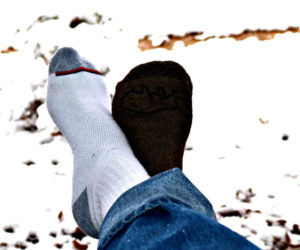
The white cotton athletic socks may be the worst choice, while the dark Buffalo Wool may be the best. I wore this mis-matched combo as part of a product review field test.
“If you’re a newb to the outdoors and need good advice on buying wool socks (5.5 pages!) or making charcloth (6 pages!), this book may work for you. Overall, seems to me the term “Bushcraft” is being misappropriated here.”
On the other hand, survival expert Jim Cobb, editor of “Backwoods Survival Guide: Practical Advice for the Simple Life” and other several preparedness and survival periodicals and books commented on Bushcraft Basics:
“One of my favorite sections is Chapter 4 – Choosing Clothing. This is an area that far too many survival texts overlook or maybe give just a page or two of discussion. The reality is that the clothing we choose to wear when we head outdoors is one of the most important decisions we can make.“
There was a reason so much space in the book was devoted to socks. Consider the socks you might need while buying hiking footwear.
Here are five things to look for in outdoor socks
Warm: How do you tell if your socks are going to be warm? Sock warmth is measured in TOGs (Thermal Overall Grade). A TOG, according to Dictionary.com, is “…a unit of thermal resistance used to measure the power of insulation of a fabric, garment or quilt etc.”
A basic cotton sock, according to the Heat Holders website, has a rating of TOG 0.33. This compares to an ordinary thermal sock rating of TOG 0.89. Smartwool hunting socks have a rating of TOG 1.23.
Heat Holders Socks claim a TOG rating of 2.34.
But I’m sticking with 100 percent wool. Wool absorbs moisture, but stays warmer than many other fabrics. Wool is also inherently flame retardant.
I particularly like Buffalo Wool and Dashstein heavy socks. They are warm and comfortable and I wear them a lot in cold weather. (I don’t rep for either company.)
Cool: I wear wool socks year round, and find they are cooler than some choices because they breathe so well.
Fact: Your feet sweat. My feet sweat, Everybody’s feet sweat. You can’t stop that – the best you can hope for is to dissipate that moisture as quickly as possible.
Hot temperatures will just make things worse. The best sock is one that insulates from the ground and ambient heat, while providing padding.
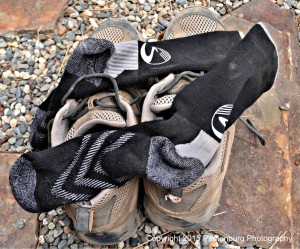
These wool socks are perfect for wear with these Merrell Vents. This is an ideal hot weather combination.
Boot fit: Your socks will directly affect how well your boots/shoes fit. That, in turn, impacts how comfortable they will be on long hikes. Generally, you should look for hiking footwear that is about one-half to a full size larger and wider than the shoes you wear every day in the city. Your feet will swell normally when walking, and that shoe that fit well in the morning with your regular in-town socks will be too tight in the afternoon.
You should be able to comfortably wiggle your toes after hiking in the afternoon when wearing your hikers with the appropriate socks.
Sock fit and cushion: Get socks that fit well, neither too big or too small. Too-small socks start out being uncomfortable and crowd your toes. The situation will probably just get worse. Too-big socks could mean the heel slips up too high when being slid into the boot. This may create a wrinkle over your instep. Wrinkles = blisters.
The correct-sized socks will fit snugly, neither too tight or loose.
Sustainability: Wool is the best when it comes to lack of environmental impact.
Synthetics are great fabrics in many situations. They are typically cheaper and more lightweight than wool, and probably more widely available.
But many synthetics are petroleum-based. This means the carbon footprint is extreme and there is a long, complicated manufacturing process. Synthetics are not self sustaining.
Sheep, on the other hand, convert biomass into fiber for clothing. A sheep can help control brush and weeds, be sheared many times, and there is virtually no air pollution associated with raising wool.
Survival and comfort in the outdoors starts long before you get to the trailhead. To make your time outdoors enjoyable, consider all the little pieces that combine to give you great outdoor gear. The socks you wear should be at the top of the list!
Walk softly, leave no trace and pick up trash!
There are many factors that determine how comfortable your hiking footwear will be. Consider these things when you are shopping:
-
- Shoes or boots for hiking?
- Waterproof or not?
- What are the best socks for the conditions?
- How do you avoid getting sore feet?
- Will the shoes or boots keep your feet warm?
Please click here to check out and subscribe to the SurvivalCommonSense.com YouTube channel – thanks!

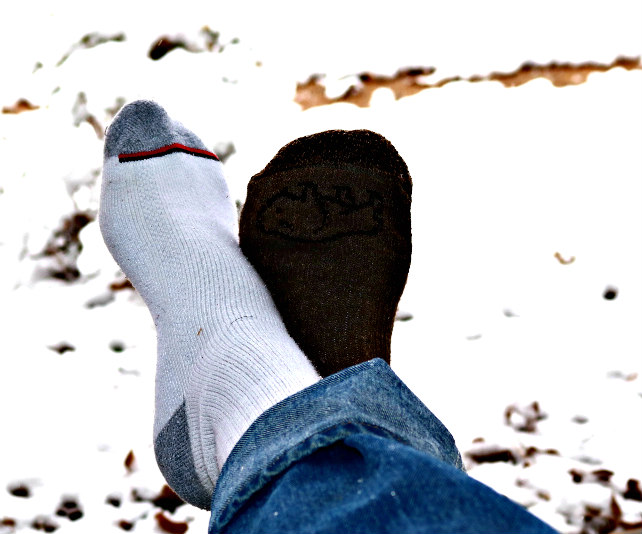

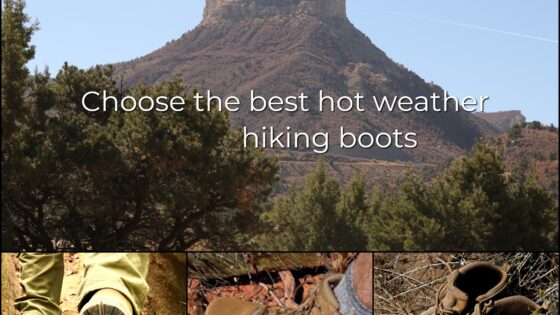
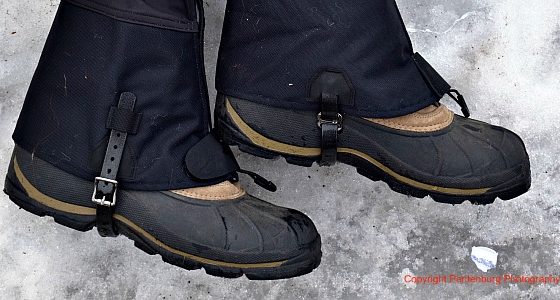
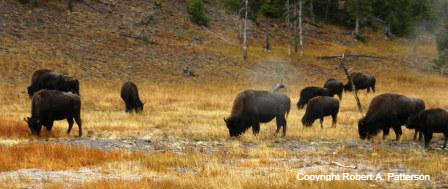
Leave a Reply